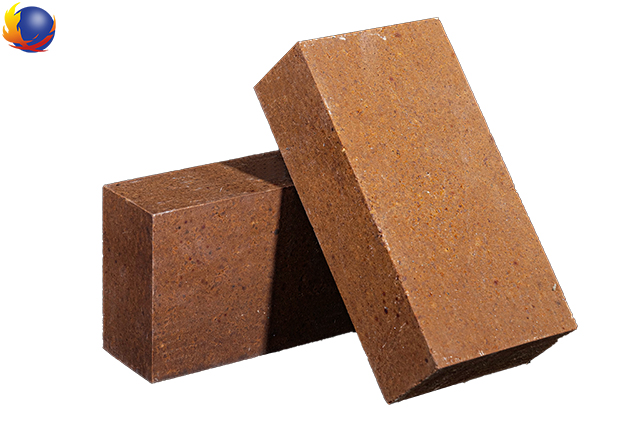Breathable brick is a functional refractory material, mainly used for gas stirring during the smelting process of ferrous and non-ferrous metals. Its function is to accelerate chemical and physical reactions during the smelting process through gas stirring and reduce energy consumption. The breathable bricks themselves are divided into ladle breathable bricks, converter breathable bricks, electric furnace breathable bricks, rotary anode furnace breathable bricks, etc. according to different carriers. Breathable bricks are divided into split breathable bricks and integral breathable bricks according to different combination methods. Breathable bricks are divided into anti-seepage breathable bricks and slit-type breathable bricks according to the on-site steelmaking process.
The materials of ladle breathable bricks are mainly sintered magnesia, magnesia chromium, high alumina and corundum.
1. Sintered magnesia breathable bricks
Sintered magnesia materials refer to refractory materials with an MgO content of more than 80%. They are alkaline refractory materials. They have the advantages of high refractoriness, strong resistance to alkaline slag erosion, are not corroded by Ca and CaO, and do not pollute molten steel. However, its large thermal expansion coefficient and poor thermal shock resistance make the material easy to peel off, which greatly reduces the service life of magnesium refractory materials.
2. Magnesium chromium breathable bricks
Magnesium chromium material is a refractory material with MgO and Cr2O3 as the main components, and periclase and sharpite as the main mineral components. Chromium ore is inert to steelmaking slag and compatible with other refractory materials. Therefore, the emergence of magnesia-chromium materials has greatly improved the thermal shock resistance of magnesia materials.
3. High alumina breathable bricks
High-aluminum materials refer to refractory materials with an Al2O3 content greater than 48%. They have the characteristics of high hot and cold strength, good wear resistance, thermal shock resistance, spalling resistance, and good volume stability at high temperatures. However, its resistance to slag corrosion and penetration is poor, and it is not enough to resist the infiltration and penetration of molten slag into the bricks during the entire package.
4. Corundum breathable bricks
Corundum material refers to a refractory material with an Al2O3 content of more than 90%. Corundum is made of industrial alumina or bauxite after sintering or electric fusion. When industrial alumina is used for electric fusion, white corundum is obtained. The Al2O3 content is greater than 98.5%; when bauxite is used as raw material, ordinary corundum is obtained; when iron filings are added, brown corundum is produced; when germanium stone or germanium oxide is added, germanium corundum is obtained, and when Cr2O3 is added, chromium is obtained Corundum, fused tabular corundum is tabular corundum formed directly from industrial alumina as the main raw material in a semi-molten state in an electric arc furnace at 1900-2000°C. Due to the ultra-high temperature in the formation area of fused tabular corundum, there are It is conducive to the volatilization of volatile impurities such as Na2O, so it is also a process of self-purification and purification. Plate-shaped alumina materials are characterized by high thermal conductivity, good thermal stability, high high-temperature strength, and strong corrosion resistance, and the production cost is relatively high.
Under high temperature and vacuum, the order of wetting angles of molten steel to several refractory oxides is as follows: Cr2O3>Al2O3>MgO, and the stability of oxides is as follows: Al2O3>CaO>MgO>Cr2O3. Considering the above two points, Using corundum as the main crystal phase of breathable bricks is a better choice. At the same time, the melting point of Cr2O3 is 2275°C, which is higher than the melting point of Al2O3 (2050°C). Alumina and chromium oxide can form a continuous solid solution. The solid solution formed by AI2O3-Cr2O3 has significant resistance to the erosion of iron oxide or slag. Enhance. Adding a small amount of Cr2O3 can inhibit the excessive growth of alumina crystals, thereby reducing the internal stress of the crystals and improving the physical properties of the material. However, if too much Cr2O3 is added, the growth rate of corundum grains will be seriously affected, thereby reducing the physical properties of the material. Therefore, introducing an appropriate amount of Cr2O3 can improve the thermal shock stability, erosion resistance and corrosion resistance of the material. However, from an environmental perspective, the introduction of Cr2O3 will cause pollution to the environment, so the introduction of Cr2O3 should be carefully considered.
Realizing the bottom-blown argon process for ladle ventilated bricks, the ladle ventilated bricks produced by Rongsheng have good high temperature resistance, corrosion resistance, thermal shock resistance, high temperature volume stability and high strength, good air permeability, stable operation, accurate appearance and dimensions, Features include less penetration of molten steel.



